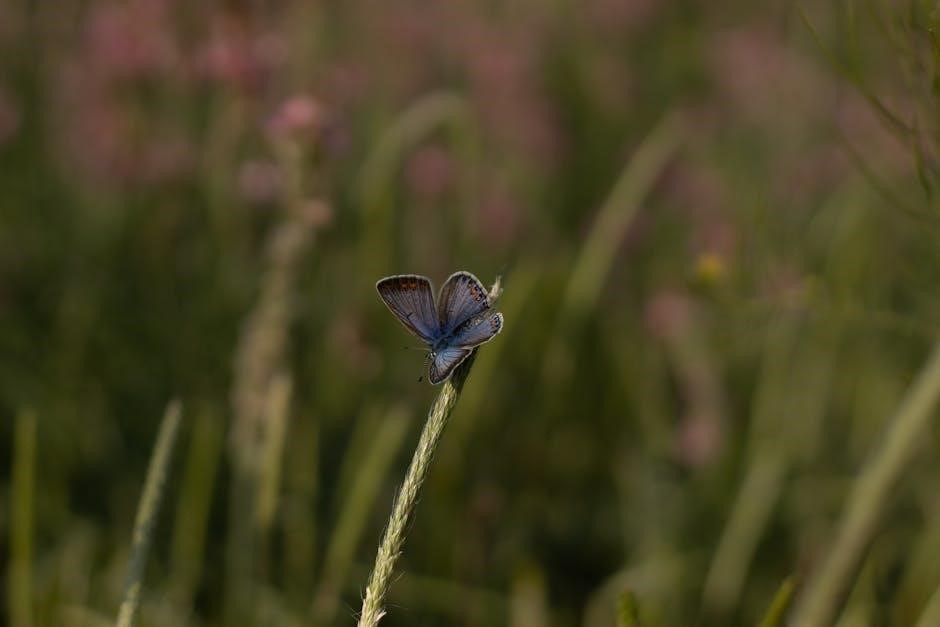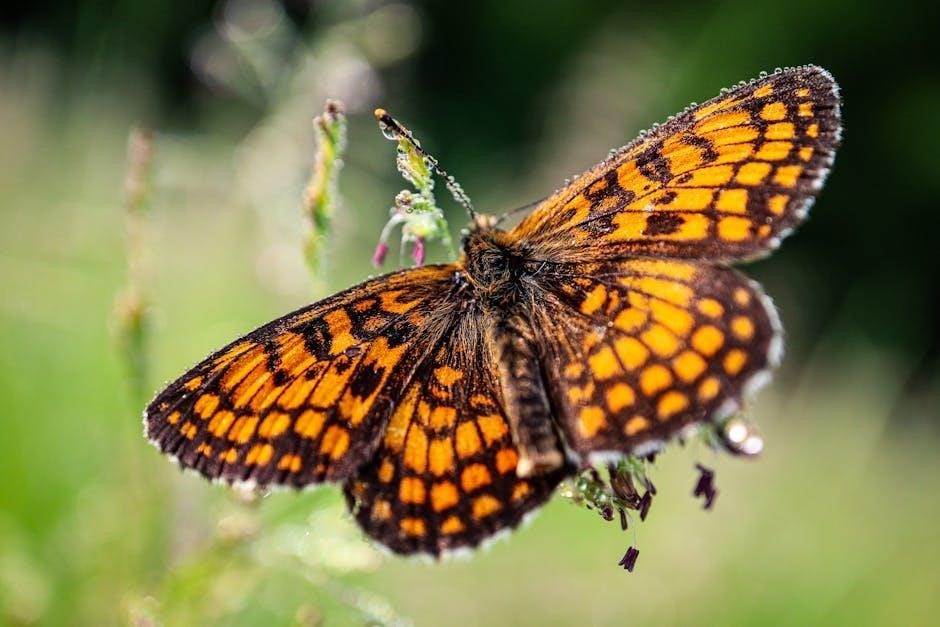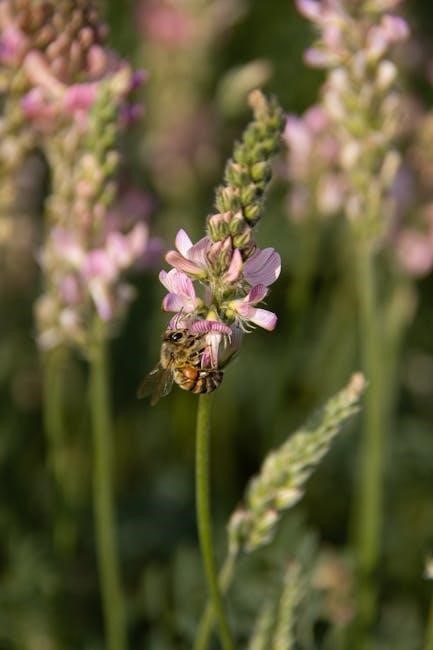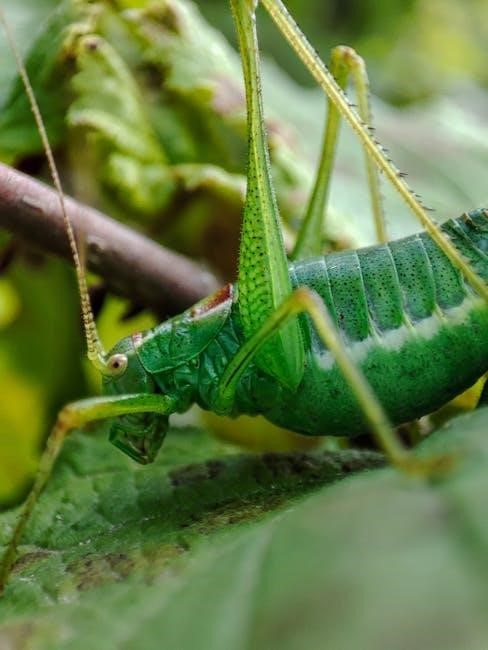Safer Insect Killing Soap is a ready-to-use or concentrate formula designed to control soft-bodied pests like aphids, whiteflies, and spider mites. It is eco-friendly, biodegradable, and safe for use on edibles and ornamentals, making it a popular choice for integrated pest management (IPM) programs. The soap works by breaking down the insect’s exoskeleton, leading to rapid dehydration and death. It is gentle on plants and the environment, ensuring a safer alternative to chemical-based pesticides. Regular application can effectively manage pest infestations without harming beneficial insects or plants. Always follow the mixing and application instructions for optimal results.
1.1 Overview of Safer Insect Killing Soap
Safer Insect Killing Soap is a gentle, non-toxic pesticide available in ready-to-use (RTU) and concentrate forms. It targets soft-bodied pests like aphids, mealybugs, and spider mites by breaking down their exoskeletons. Safe for edibles, ornamentals, and indoor plants, it is biodegradable and eco-friendly. Application is straightforward, requiring dilution for concentrates, and it is effective when sprayed directly on insects. Follow label instructions for proper use.
1.2 Importance of Using Insecticidal Soap for Pest Control
Insecticidal soap is a safe, eco-friendly alternative to chemical pesticides, effectively controlling soft-bodied pests without harming beneficial insects. It is biodegradable and gentle on plants, making it ideal for edibles, ornamentals, and indoor plants. Regular use helps maintain plant health and prevents pest infestations, promoting a balanced ecosystem and supporting sustainable gardening practices.
Understanding the Product
Safer Insect Killing Soap is a gentle, effective formula for controlling soft-bodied pests. Available in ready-to-use and concentrate forms, it’s safe for edibles, ornamentals, and the environment.
2.1 Ingredients and Formulation
The Safer Insect Killing Soap primarily contains insecticidal soap derived from natural fatty acids. It is biodegradable and non-toxic, making it safe for use on plants and the environment. The concentrate is mixed with water at a ratio of 10 mL per 500 mL for effective pest control. This formulation ensures it targets soft-bodied insects without harming beneficial ones or plants when applied correctly. Always shake well before use for optimal results.
2.2 How Insecticidal Soap Works
Safer Insect Killing Soap works as a contact killer, breaking down the insect’s exoskeleton and causing dehydration. It targets soft-bodied pests like aphids, spider mites, and mealybugs. The soap must directly contact the insect for effectiveness, making thorough coverage essential. It does not harm beneficial insects or plants when used as directed, ensuring safe and targeted pest control.
Preparation and Mixing Instructions
Shake the concentrate well and mix 10 mL with 500 mL of water. Avoid using on stressed plants or when temperatures exceed 90°F for optimal results.
3.1 Dilution Ratio for Optimal Effectiveness
Dilute 10 mL of Safer Insect Killing Soap concentrate in 500 mL of water, following a 1:50 ratio. This ensures the solution is effective without harming plants. Apply weekly for 2-3 weeks for pests like aphids and spider mites. Always use freshly mixed solutions and avoid mixing more than needed. Proper dilution is crucial for safety and efficacy.
3.2 Steps for Mixing the Solution
Shake the Safer Insect Killing Soap concentrate well before use. Measure 10 mL of concentrate and mix with 500 mL of water, following the 1:50 ratio. Stir thoroughly to ensure the solution is well-blended. Use the freshly mixed solution immediately for optimal results. Avoid mixing excess, as the solution does not store well. Apply with a sprayer for even coverage.
Application Methods
Apply Safer Insect Killing Soap directly to infested areas using hand or power sprayers. Ensure thorough coverage of all plant surfaces, especially where pests are present. Spray when insects or damage appear, avoiding high temperatures and stressed plants for best results.
4.1 When to Apply the Soap
Apply Safer Insect Killing Soap at the first sign of pests or damage. Optimal timing is in the early morning or late afternoon to avoid direct sunlight and high temperatures above 90°F. Avoid spraying on newly transplanted or drought-stressed plants. Consistent application, often weekly for 2-3 weeks, ensures effective pest control and prevents infestation recurrence.
4.2 How to Spray for Maximum Coverage
Shake the solution thoroughly before spraying. Use a hand or power sprayer to apply the soap evenly, ensuring complete coverage of all plant surfaces, including the undersides of leaves and stems. Spray directly on insects or areas showing signs of infestation. Follow the recommended mixing ratio and apply when pests are present to maximize effectiveness and prevent resistance.
4.3 Tools and Equipment Needed
Gather a hand sprayer or power sprayer for application. Use a bucket or mixing container and a measuring cup for accurate dilution. Ensure all equipment is clean to prevent contamination. Wear gloves and protective eyewear for safety. Use a soft-bristle brush for hard-to-reach areas on plants to ensure thorough coverage without damaging foliage or stems during the spraying process.
Safety Precautions
Keep out of reach of children. Avoid application when temperatures exceed 90°F. Do not use on new transplants, stressed plants, or newly rooted cuttings. Wear gloves and protective eyewear during application to ensure safety.
5.1 Handling and Storage Tips
Store Safer Insect Killing Soap in a cool, dry place, away from direct sunlight and children. Keep the product tightly sealed when not in use to prevent contamination. Avoid exposing the soap to extreme temperatures or moisture, as this may affect its effectiveness. Always handle the concentrate with care, wearing gloves and protective eyewear to avoid skin or eye irritation. Ensure the product is stored in its original container and labeled properly for easy identification and safe handling. Proper storage ensures the soap remains effective for future use and prevents any potential hazards.
5.2 Precautions for Humans and Pets
Keep Safer Insect Killing Soap out of reach of children and pets. Avoid contact with skin, eyes, or mucous membranes, as it may cause irritation. Wash hands thoroughly after handling the product. In case of eye contact, rinse with plenty of water. If irritation persists, seek medical advice. Keep pets away during application until the soap solution is dry.

Common Pests Targeted
Safer Insect Killing Soap effectively controls aphids, whiteflies, spider mites, and mealybugs. It targets soft-bodied insects, providing quick and reliable results for infested plants.
6.1 Aphids, Whiteflies, and Spider Mites
Aphids, whiteflies, and spider mites are common pests targeted by Safer Insect Killing Soap. Aphids feed on plant sap, causing stunted growth, while whiteflies and spider mites damage leaves and spread disease. Regular application of the soap helps control these pests by breaking down their exoskeletons, ensuring plant health and productivity. Treat weekly for optimal results and prevent infestations.
6.2 Mealybugs and Other Soft-Bodied Insects
Mealybugs and other soft-bodied insects are effectively controlled by Safer Insect Killing Soap. The soap breaks down their protective wax coating, leading to dehydration and death. Regular weekly applications for 2-3 weeks ensure thorough elimination. This method is gentle on plants and supports a balanced ecosystem, making it ideal for managing mealybugs and similar pests without harming beneficial insects or the environment.

Frequency and Timing of Applications
Apply Safer Insect Killing Soap weekly for 2-3 weeks to control pests like aphids and mealybugs. Avoid spraying when temperatures exceed 90°F for optimal effectiveness and plant safety.
7.1 How Often to Apply the Soap
Apply Safer Insect Killing Soap weekly for 2-3 weeks to effectively control pests like aphids, mealybugs, spider mites, and whiteflies. Repeat as needed to maintain control and prevent reinfestation. Avoid applying when temperatures exceed 90°F to minimize plant stress and ensure optimal results.
7.2 Best Time of Day for Application
Apply Safer Insect Killing Soap in the early morning or late evening to avoid direct sunlight and high temperatures. This ensures the soap adheres to the foliage and doesn’t evaporate quickly, maximizing effectiveness. Avoid spraying when temperatures exceed 90°F to prevent leaf burn and maintain plant health.
Indoor and Outdoor Usage
Safer Insect Killing Soap is effective for both indoor and outdoor use, controlling pests on houseplants, garden plants, ornamentals, vegetables, flowers, trees, and shrubs, but avoid using on new transplants, stressed plants, or when temperatures exceed 90°F.
8.1 Using on Houseplants
Safer Insect Killing Soap is ideal for houseplants, controlling aphids, spider mites, and mealybugs. Dilute 10 mL of concentrate in 500 mL of water. Apply weekly for 2-3 weeks, then as needed. Avoid using on stressed plants, new transplants, or when temperatures exceed 90°F. Ensure thorough coverage of all infested surfaces for effective pest control and plant safety.

8.2 Applying on Garden and Ornamental Plants
Safer Insect Killing Soap is effective for garden and ornamental plants, targeting aphids, spider mites, and mealybugs. Mix 10 mL of concentrate with 500 mL of water and apply weekly for 2-3 weeks. Safe for use on flowers, trees, and shrubs, it is biodegradable and gentle on plants. Avoid application above 90°F and ensure thorough coverage for optimal results.

Integrated Pest Management (IPM)
Safer Insect Killing Soap is a key component of IPM programs, offering a biodegradable solution to control pests. Use it alongside other methods to ensure balanced pest control and minimize resistance. Apply as directed to maintain ecosystem health while protecting plants effectively.
9.1 Combining Soap with Other Pest Control Methods
Combine Safer Insect Killing Soap with biological controls, traps, and barriers for comprehensive pest management. Use it alongside neem oil or diatomaceous earth for enhanced effectiveness. The soap complements natural predators and traps, creating a multi-faceted approach to target pests from different angles, ensuring long-term plant health and reducing chemical reliance.
9.2 Monitoring for Pest Resistance
Regularly monitor pest populations to avoid resistance. If infestations persist despite proper application, consider alternating with other methods like neem oil or biological controls. Maintain plant health through balanced nutrition and hydration, as stressed plants attract pests. Rotate treatments and avoid overuse to ensure long-term effectiveness and prevent pest adaptation to the soap-based solution.

Environmental Considerations
Safer Insect Killing Soap is biodegradable and non-toxic to wildlife, making it eco-friendly. It is safe for use on edible plants and decomposes naturally, minimizing environmental impact.
10.1 Biodegradability and Eco-Friendliness
Safer Insect Killing Soap is biodegradable and non-toxic, making it an eco-friendly pest control solution. It breaks down naturally in the environment, reducing ecological impact. Safe for use on edible plants, it ensures minimal harm to beneficial insects and wildlife. Its gentle formula aligns with sustainable gardening practices, promoting a healthier ecosystem for plants and wildlife alike.
10.2 Disposal and Cleanup Instructions
Dispose of unused Safer Insect Killing Soap according to local regulations. Dilute any leftover solution with water before disposal. Do not pour into waterways or drains. Clean equipment thoroughly with soap and water after use. Store empty containers in a safe, dry place. Proper disposal ensures environmental safety and prevents contamination of water sources.

Troubleshooting Common Issues
If the soap isn’t effective, ensure proper mixing and direct contact with pests. Avoid applying during high temperatures or on stressed plants. Reapply as needed for persistent infestations.
11.1 Why the Soap May Not Be Effective
The soap may not work if not mixed correctly or applied directly on pests. High temperatures, stressed plants, or improper dilution can reduce effectiveness. Avoid using on new transplants or during extreme heat. Ensure thorough coverage and reapply as needed for persistent issues. Always follow the recommended dilution ratio and application guidelines for best results.
11.2 Managing Plant Stress After Application
After applying Safer Insect Killing Soap, plants may experience stress. Avoid using the soap on stressed, newly transplanted, or drought-affected plants. Water plants thoroughly before application and ensure they are healthy. Avoid spraying during extreme heat or when plants are under stress. Monitor for signs of stress, such as yellowing leaves, and adjust future treatments accordingly to prevent further harm.
Safer Insect Killing Soap is an eco-friendly solution for managing pests effectively. Follow instructions carefully for optimal results and to ensure plant and environmental safety.
12.1 Summary of Key Instructions
Always shake well before mixing. Dilute 10 mL of concentrate in 500 mL of water. Apply weekly for 2-3 weeks to control aphids, whiteflies, and spider mites. Avoid spraying when temperatures exceed 90°F. Do not use on stressed or newly transplanted plants. Follow all safety precautions and application guidelines for effective pest control and plant protection. Repeat as needed based on pest activity.
12.2 Final Tips for Successful Pest Control
For optimal results, apply consistently and thoroughly, ensuring full coverage of infested areas. Monitor pest populations and adjust treatment frequency as needed. Avoid spraying during extreme heat and use freshly mixed solutions for maximum effectiveness. Combine with other IPM strategies for long-term pest management. Always follow safety guidelines to protect plants, humans, and pets. Regular monitoring helps prevent resistance and ensures sustainable pest control.
